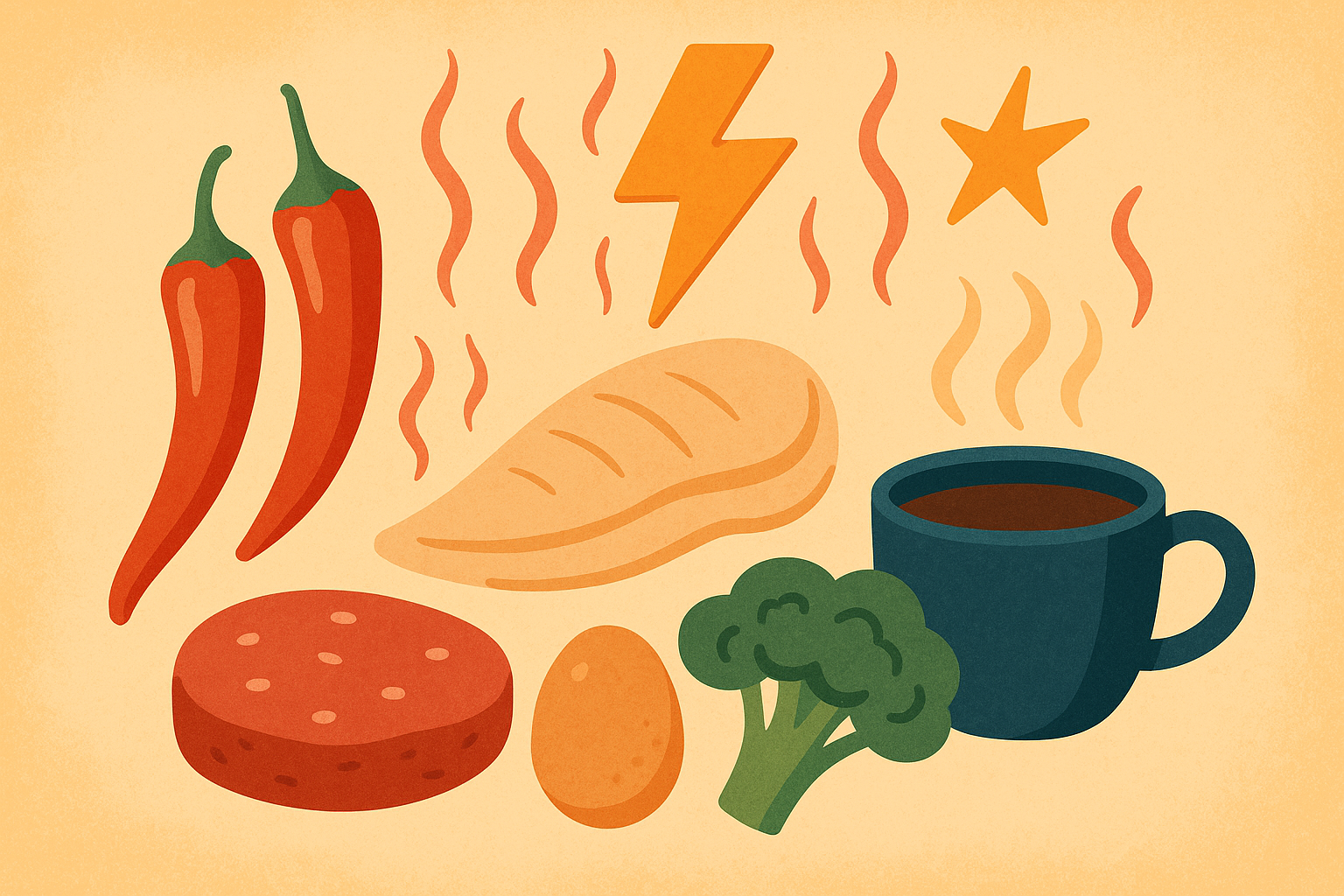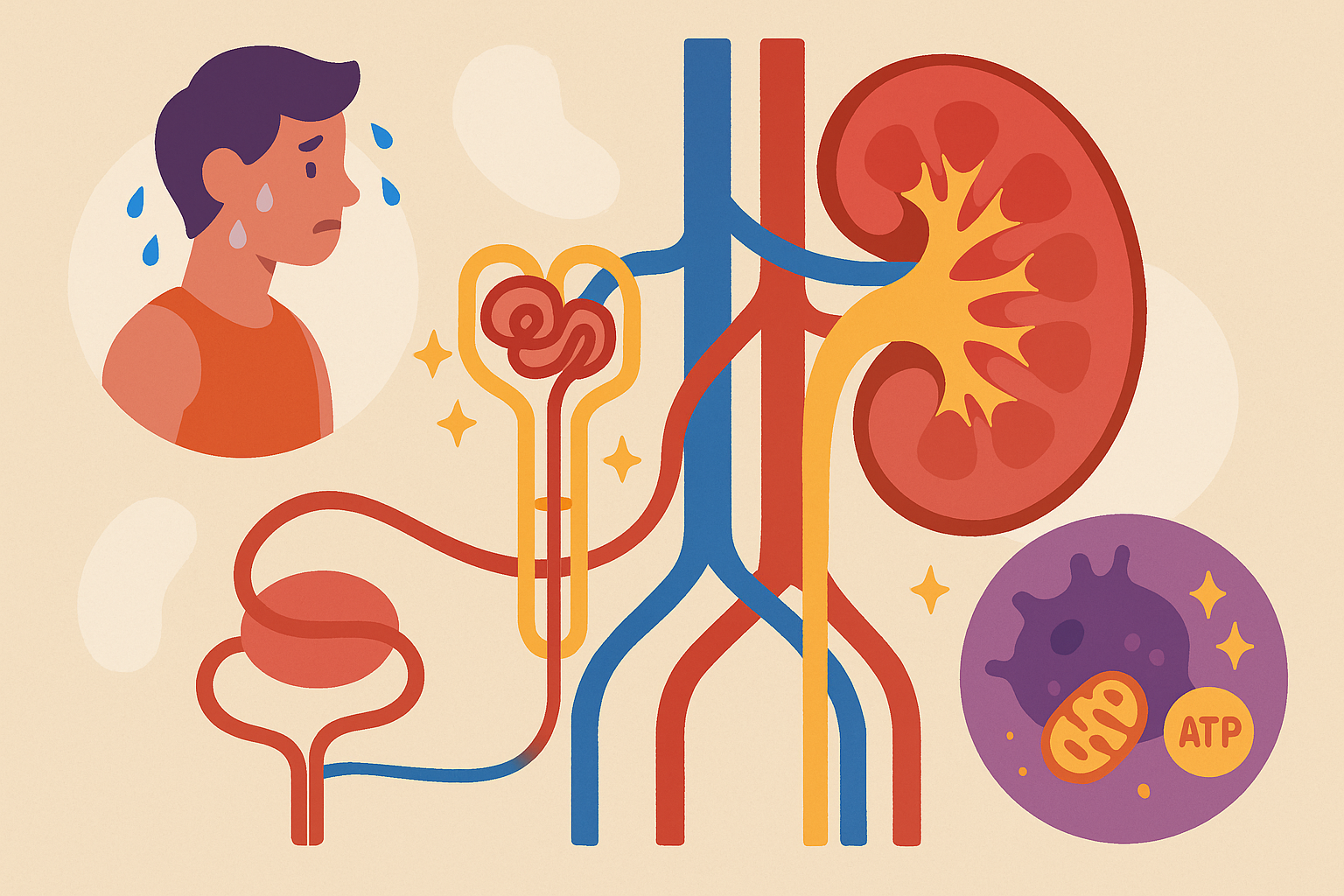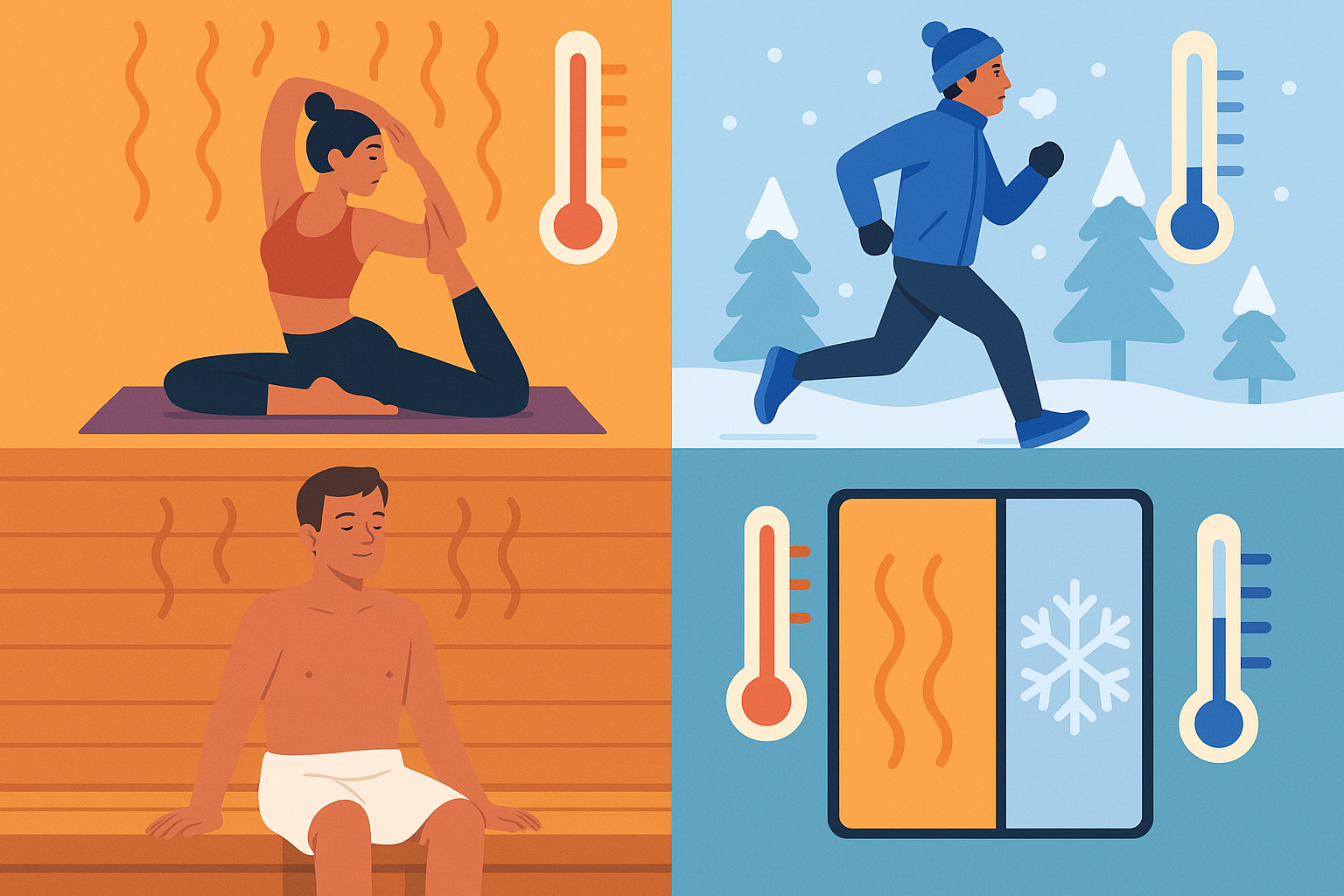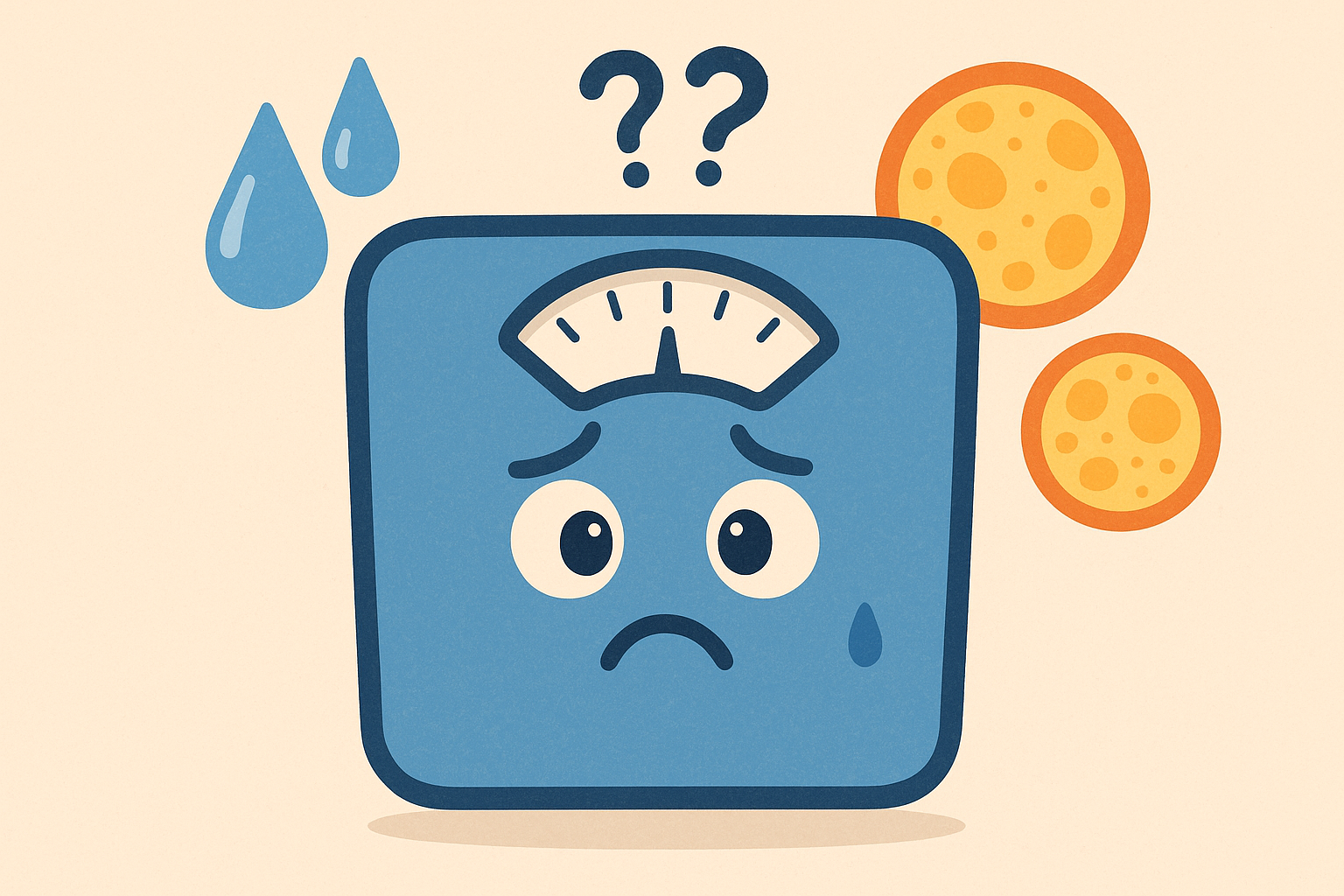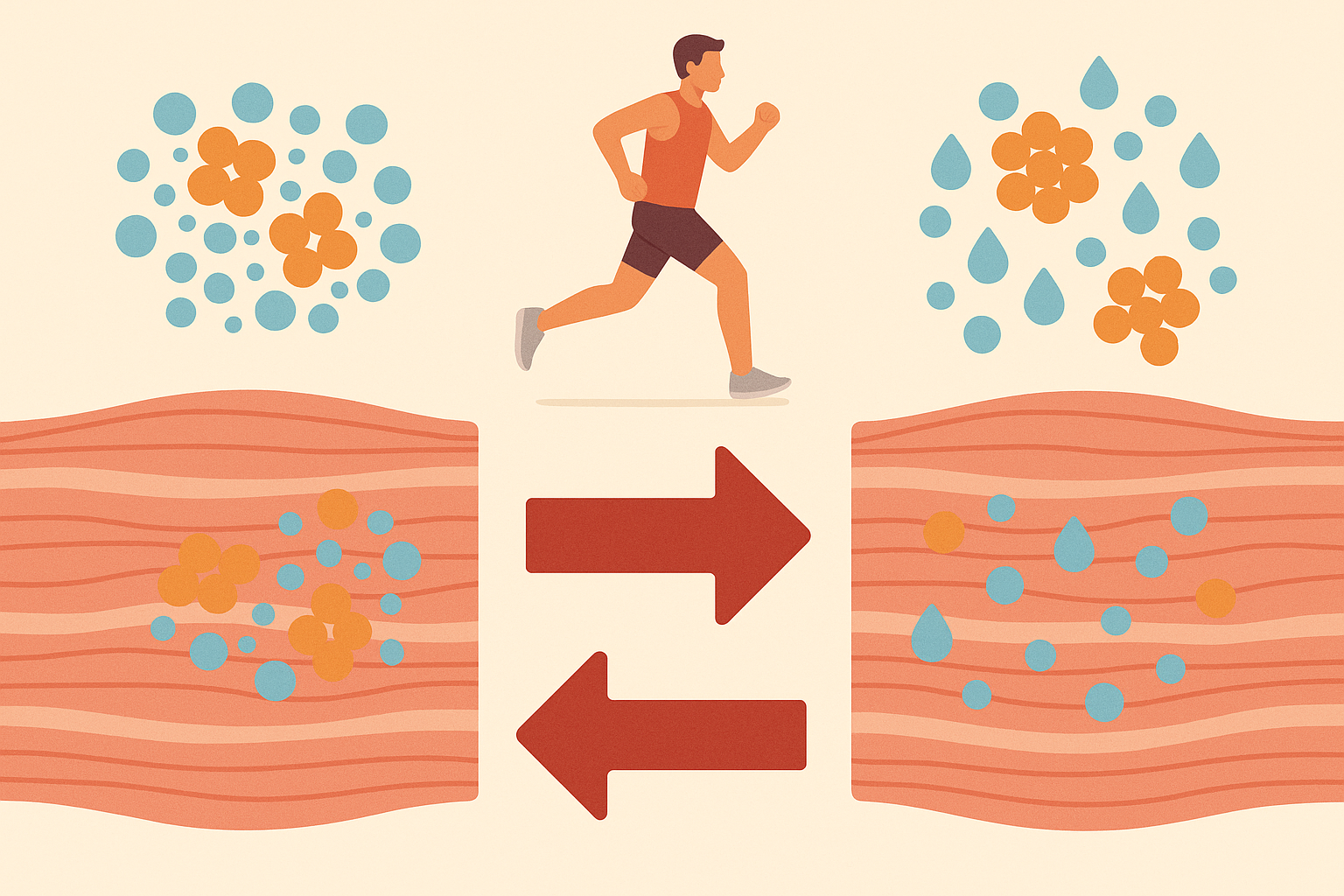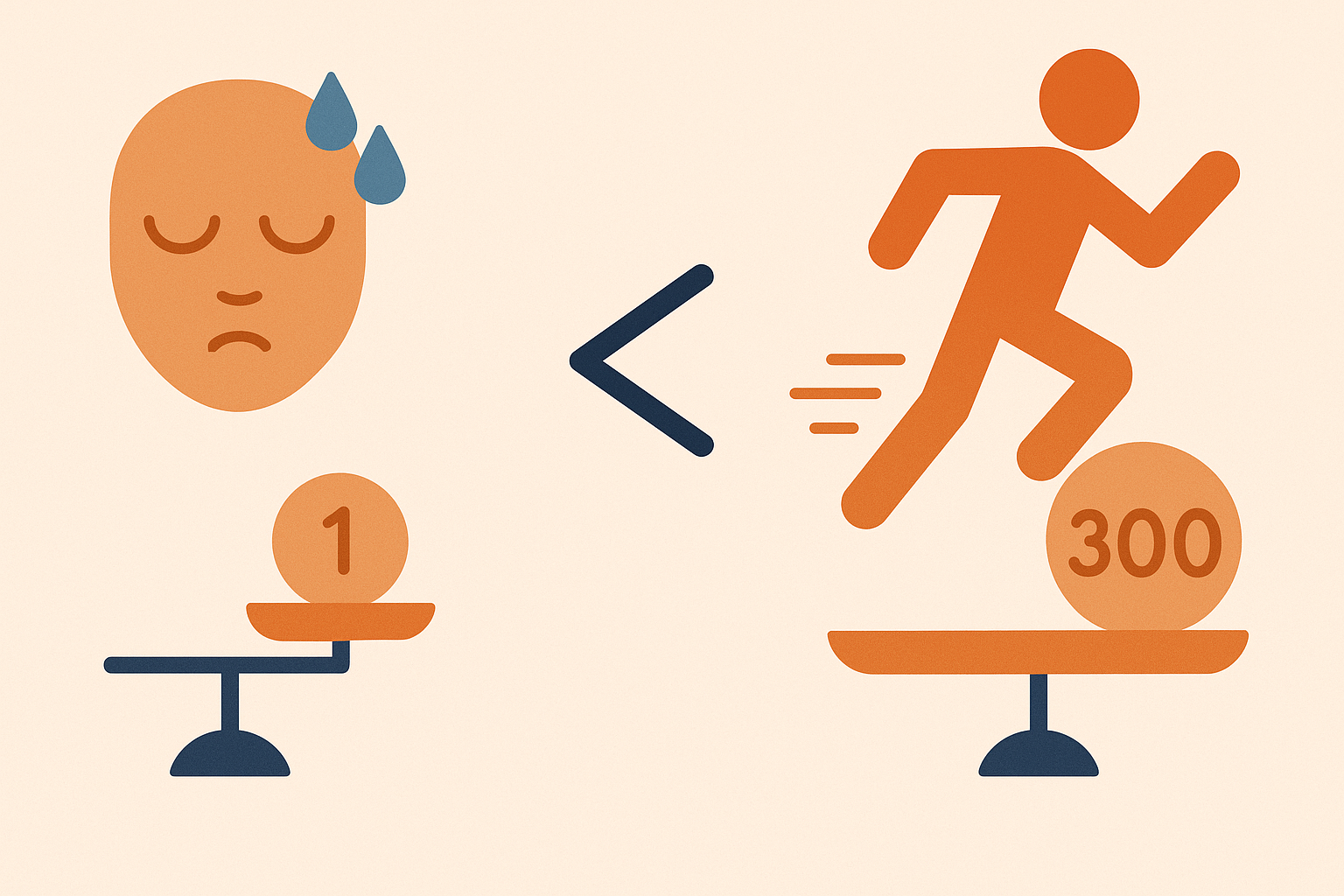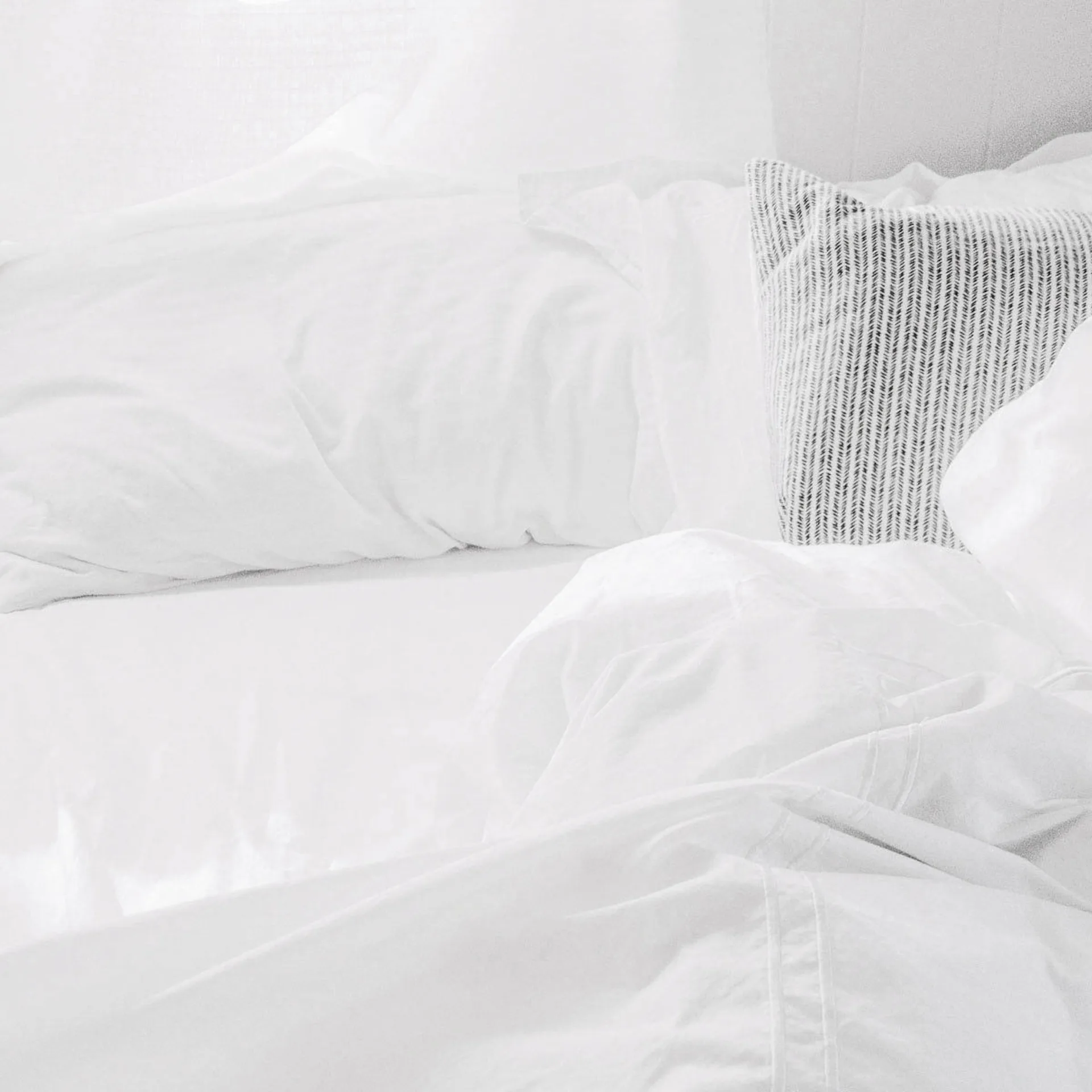What I Actually Learned About Sweating and Calorie Burn

I used to come home from spin class completely drenched, feeling like I’d torched a thousand calories just from all that sweat dripping everywhere. Turns out I had it completely backwards about how sweating actually affects calorie burn. After diving deep into the science, I learned that while sweating feels like you’re melting fat away, the reality is way more complex than most people realize.
From what I’ve read and experienced, a 30-minute session in a sauna burns an extra 300-500 calories above basal metabolic rate, but this isn’t from the sweat production itself – it’s from your body’s overall response to heat stress. Does sweating burn calories? The answer was pretty surprising.
Table of Contents
- The Real Energy Cost of Making Sweat (It’s Not What You Think)
- What Actually Burns Calories When You’re Sweating Buckets
- The Hidden Metabolic Price Your Body Pays After Heavy Sweating
- How I Learned to Use Sweat Strategically for Better Fat Loss
- Why Your Scale Lies After Every Sweaty Workout
- The Math Behind Sweat: Actual Calories vs. What You Feel
TL;DR
- Sweating itself burns almost no calories – only about 0.5-1 calorie per 100ml of sweat produced
- The activities that make you sweat are what actually burn calories, not the sweat production process
- That immediate weight loss after sweating? It’s just water, not fat loss
- Your body does burn extra calories during recovery from heavy sweating sessions
- Even extreme sweating (3+ liters) only burns about 30 calories directly
- Strategic timing of sweat-inducing activities can boost your overall metabolism
The Real Energy Cost of Making Sweat (It’s Not What You Think)
Here’s the thing that blew my mind: making sweat barely takes any energy at all. It’s like your body found the most efficient way possible to cool you down without wasting precious calories on the cooling system itself.
I was honestly a little crushed to discover that the actual process of producing sweat requires almost no energy from your body. Your sweat glands are basically the most efficient workers in your body – they get the job done without asking for much in return. Does sweating burn calories in any meaningful way? The numbers were pretty disappointing. How many calories does sweating burn during even the most intense sessions? We’re talking about way less than you’d expect.
Your Sweat Glands Are Energy Misers
Each sweat gland operates like the most budget-conscious employee ever. I learned that producing sweat requires surprisingly little cellular energy – just a few molecules per droplet. Think of it like your body’s air conditioning system that somehow runs on almost no electricity.
This explains why just sitting in a sauna doesn’t create the calorie burn we’d hope for. Understanding this mechanism is crucial for anyone following intermittent fasting protocols, since the tiny energy demands of sweat production won’t mess with your fasting state.
The Cellular Machinery Behind Every Drop
When I dug into the science, I found that each sweat gland uses roughly 2-3 energy units per sweat droplet formed. This happens through moving sodium and chloride across tiny membranes in your skin.
It’s actually pretty amazing how efficient this process is – your body evolved to cool itself without wasting precious energy on the cooling mechanism itself.
Why Your Body Doesn’t Waste Energy on Cooling
The pumps that help form sweat need to maintain certain balances in your cells, but this energy-intensive process isn’t really about sweat production – it’s about keeping your cells functioning properly.
What hit me was that what feels like hard metabolic work (all that sweating) is actually your body being incredibly smart with its energy budget.
The Heat Transfer vs. Calorie Burning Mix-Up
This was my biggest “aha” moment – realizing that removing heat and burning calories are completely different things. When sweat evaporates from your skin, it removes heat energy, but this heat removal doesn’t mean you’re burning additional calories beyond what created that heat initially. I’d been confusing basic physics with metabolism for years.
| Heat Transfer Process | Energy Involved | Calorie Burn Impact |
|---|---|---|
| Sweat Production | 2-3 energy units per droplet | Minimal (0.5-1 cal per 100ml) |
| Sweat Evaporation | 580 calories heat removal per gram | Zero additional metabolic cost |
| Exercise Activity | High metabolic demand | 300-800 calories per hour |
| Recovery/Rehydration | Moderate energy for various pumps | 15-30 calories post-session |
How Evaporation Tricks Your Brain
Each gram of sweat that evaporates removes about 580 calories of heat energy from your skin surface. But here’s the kicker – this represents heat transfer, not metabolic calorie burn.
I used to think this heat removal meant extra calorie burn, but it’s just your body’s way of maintaining temperature without additional energy cost. It’s like thinking the steam coming off your coffee is what heated it up in the first place.
The Hot Yoga Calorie Burn Illusion
I’ve seen so many people (myself included) overestimate calorie burn in heated environments because of all that sweating. The reality hit hard when I learned that sweating more in hot conditions might actually mean your body is struggling to stay cool, not necessarily burning more calories.
Your body is working harder to maintain temperature, which isn’t the same as burning more calories efficiently.
When Dehydration Sabotages Your Metabolism
That immediate post-sweat weight loss I used to celebrate? It’s just fluid loss that can actually hurt your body’s ability to burn calories efficiently.
When you’re dehydrated, your blood volume drops and your cells don’t work as well, making your metabolism less effective. I learned this the hard way after wondering why my energy crashed after intense sweaty sessions.
What Actually Burns Calories When You’re Sweating Buckets
The real calorie-torching happens through the stuff that makes you sweat – not the sweating itself. I discovered that exercise intensity, your body’s response to spicy foods, stress reactions, and environmental adaptations are where the real action occurs.
Once I figured this out, it totally changed how I approach both fitness and nutrition. Does sweating help burn calories? Only indirectly, through the activities that cause it. The connection between sweating and weight loss is way more complex than I ever imagined.
Exercise Makes You Sweat, But Sweat Doesn’t Make You Burn Calories
During workouts, I learned that sweating serves as more of a thermometer for how hard you’re working rather than a calorie-burning mechanism. How much you sweat versus how many calories you burn varies dramatically based on your fitness level, the weather, and just how your body works.
This totally changed how I judge whether I had a good workout. This becomes especially important when considering cold exposure therapy, which can boost your metabolism without making you sweat at all.
I used to compare my sweat levels with my workout buddy like it was some kind of competition. “Look how hard I’m working!” I’d think, while she barely had a drop on her forehead. But when we tracked our actual calorie burn with heart rate monitors during identical workouts, the numbers were nearly the same. Turns out she was just better at this whole fitness thing, and her body had learned to cool itself more efficiently. Meanwhile, I was over here acting like a broken sprinkler system.
Why Fit People Sweat More But Don’t Always Burn More
Highly trained athletes often sweat more efficiently – starting earlier and at higher rates – while burning the same calories as less fit individuals during similar activities. This totally blew my mind because I’d always assumed more sweat meant more calorie burn.
Your body gets better at cooling itself as you get fitter, but that doesn’t translate to higher energy expenditure. It’s actually a sign that you’re getting more efficient, not that you’re working harder.
The Anaerobic Threshold Reality Check
When you cross from moderate to really intense exercise, sweat rate increases dramatically, indicating your muscles are working much harder. But I learned that the sweating itself contributes almost nothing to the caloric cost – it’s just your body’s response to the increased heat production from harder-working muscles.
Get this – drinking water after fasting all night increased metabolism by 30 percent in men and women. Who knew? Definitely not me, sitting there obsessing over how much I was sweating instead of focusing on basic stuff like staying hydrated.
Foods That Make You Sweat and Actually Boost Metabolism
Certain foods trigger both metabolic elevation and sweat responses, but through completely different mechanisms. I discovered that spicy food reactions, protein’s energy demands, and caffeine’s impact on your nervous system create real opportunities for strategic eating that goes beyond just making you sweat.
Can sweat burn fat when triggered by specific foods? The answer involves understanding how your body generates heat rather than sweat production.
Spicy Foods: The Double-Edged Metabolic Sword
Spicy foods can increase your metabolic rate by 8-15% while making you sweat, but the calorie burn comes from the metabolic boost, not the sweat response. I started adding more hot sauce to everything, but I focus on the thermogenic effect rather than how much it makes me sweat.
When exploring metabolic enhancement through nutrition, understanding immune-supporting foods can provide additional benefits beyond just heat generation.
Protein’s Hidden Heat Production
High-protein meals require 20-30% of their calories just for digestion and processing, often making you sweat a little as a byproduct of increased heat generation. I noticed this effect after big protein meals and learned it’s actually a sign that my metabolism is working harder to process the food – the sweat is just a side effect.
The Hidden Metabolic Price Your Body Pays After Heavy Sweating
The metabolic impact of sweating that I’d completely missed happens during recovery. Your body spends significant energy getting fluid balance back to normal, making new proteins for your sweat glands, and keeping your cells properly hydrated after heavy sweating episodes.
This recovery phase actually does require measurable energy expenditure that can last for hours. The relationship between sweating and weight loss becomes clearer when you understand all the behind-the-scenes work your body does afterward.
Your Body’s Expensive Recovery Process
After learning about all the behind-the-scenes work your body does to get back to normal, I realized that the real metabolic cost comes after the sweat session ends. Your body works overtime to restore fluid balance and maintain cellular function, requiring additional energy for various processes. This elevated metabolic rate can stick around for 2-6 hours post-exercise.
After tracking my metabolic rate with a continuous glucose monitor following intense sauna sessions, I noticed my metabolism remained elevated for 3-4 hours afterward. This wasn’t from the sweating itself, but from my body’s energy-intensive efforts to restore electrolyte balance and get my cells properly hydrated again.
Why Your Kidneys Work Overtime After Sweating
Your kidneys have to work harder to concentrate urine and hold onto water after sweating, requiring additional energy for active transport processes. I never considered this hidden energy cost, but it’s a big part of why you might feel more tired after intense sweaty sessions – your organs are working harder behind the scenes.
The Cellular Rehydration Energy Demand
Getting your cells properly hydrated again requires energy-dependent pumps to work overtime. I learned that this process contributes to elevated metabolic rate for hours after exercise, which explains why I sometimes felt hungrier later in the day after morning sweat sessions.
How Regular Sweating Actually Changes Your Metabolism
Regular exposure to sweat-inducing activities creates adaptations that can enhance overall calorie-burning capacity through improved cellular function and protective protein production. These adaptations require significant energy investment but improve long-term metabolic efficiency – something I wish I’d understood years ago.
The adaptation process shares similarities with brown fat activation, where repeated thermal stress creates lasting metabolic improvements.
The Expensive Process of Building Heat Tolerance
Repeated heat stress triggers production of protective proteins that require significant energy investment. I discovered that making these protective proteins costs substantial calories, but they improve your long-term metabolic efficiency and resilience to stress.
Heat Adaptation Checklist:
- Gradually increase heat exposure duration (start with 10-15 minutes)
- Monitor hydration levels before, during, and after sessions
- Track recovery heart rate to gauge adaptation progress
- Maintain consistent sleep schedule to support protein synthesis
- Include electrolyte replacement in post-session nutrition
- Allow 48-72 hours between intense heat sessions for recovery
How I Learned to Use Sweat Strategically for Better Fat Loss
Instead of focusing on sweating for direct calorie burn, I learned to use sweat-inducing activities for maximum metabolic benefit. This approach creates more effective fat loss and fitness strategies by understanding how to work with environmental factors and timing for metabolic advantage rather than chasing sweat volume.
Does sweating burn fat directly? No, but strategic use of sweat-inducing activities can enhance fat burning. Can sweating burn fat when combined with proper metabolic strategies? Absolutely, but through indirect mechanisms.
Environmental Tricks That Actually Work
Strategic use of temperature, humidity, and timing can enhance the metabolic benefits of activities that naturally produce sweat. I experimented with various environmental changes and found that the key is enhancing metabolic benefits without falling into the trap of thinking sweat volume equals calorie burn.
Temperature Contrast Training Changed Everything
Alternating between heat and cold exposure can stimulate brown fat activation and improve metabolic flexibility while producing beneficial stress adaptations. I started doing contrast showers and sauna-to-cold plunge sessions, focusing on the metabolic adaptations rather than the immediate sweat response.
Timing Your Sweat Sessions for Maximum Impact
Coordinating sweat-inducing activities with your natural daily rhythm, meal timing, and hormonal fluctuations can amplify metabolic benefits beyond immediate calorie burn. I learned to work with my body’s natural temperature fluctuations throughout the day to enhance the metabolic impact of exercise and heat exposure.
Proper timing becomes even more crucial when following autophagy-promoting protocols, where metabolic stress timing can enhance cellular renewal processes.
Working With Your Body’s Natural Temperature Rhythm
Your body’s natural temperature fluctuations throughout the day can be leveraged to enhance the metabolic impact of sweat-producing activities when timed right. I discovered that late afternoon workouts often produce more metabolic benefit because they align with natural daily thermogenesis patterns.
Strategic Sweat Session Timing Template:
Morning (6-9 AM):
- Light cardio or strength training
- Focus on metabolic activation, not heavy sweating
- Follow with protein-rich breakfast
Mid-Morning (9-11 AM):
- Ideal for sauna sessions
- Body temperature naturally rising
- Enhanced protective protein response
Late Afternoon (3-6 PM):
- Peak time for intense workouts
- Highest natural body temperature
- Maximum metabolic benefit potential
Evening (After 7 PM):
- Avoid intense heat exposure
- Light movement only to prevent sleep disruption
Why Your Scale Lies After Every Sweaty Workout
I’m embarrassed to admit how long I spent weighing myself before and after workouts, celebrating those 3-pound drops like I’d just won the lottery. Spoiler alert: it was just water weight , and I was basically high-fiving myself for being dehydrated.
The persistent belief that sweating directly burns fat comes from not understanding the difference between water weight changes and actual fat loss. I fell into this trap for years, letting immediate post-workout weight loss create this reward loop that actually hurt my fat loss progress by encouraging dehydration rather than focusing on sustainable changes.
Does sweating help you lose weight in the long term? The scale might suggest yes immediately after, but the reality is way more complex. Can you lose weight by sweating alone? The numbers tell a different story.
The Psychology of Post-Sweat Weight Loss
Immediate weight loss after sweating creates this powerful psychological reward that can actually mess up long-term progress. I used to celebrate those 2-3 pound drops after intense sessions, not realizing I was training my brain to associate dehydration with success rather than focusing on actual fat loss processes.
This psychological trap becomes especially problematic for those exploring digestive health optimization, where water retention patterns can mask true progress.
| Post-Sweat Weight Change | What It Actually Represents | Recovery Timeline |
|---|---|---|
| 1-2 lbs immediate loss | Water and electrolyte depletion | 2-4 hours with proper hydration |
| 3-4 lbs after intense session | Severe dehydration + glycogen depletion | 6-12 hours with full rehydration |
| 0.5-1 lb sustained loss | Potential fat loss (over weeks) | Permanent with caloric deficit |
| Same or higher weight next day | Normal rehydration + inflammation | 24-48 hours for full recovery |
How Sweat Suits and Saunas Fool You
I actually used to wear those plastic sweat suits to the gym (yes, I was that person) thinking I was being super smart about weight loss. Passive heat exposure that makes you sweat without corresponding metabolic work provides minimal calorie burn while potentially hurting your body’s natural fat burning processes through heat stress.
When I experimented with a neoprene sweat suit during regular workouts, I lost 4 pounds immediately after each session but gained it all back within 6 hours of normal eating and drinking. After three weeks of this cycle, my actual body fat percentage hadn’t changed at all – I was just repeatedly dehydrating and rehydrating myself.
The Glycogen Connection Nobody Talks About
Heavy sweating during exercise uses up glycogen stores, which carry 3-4 grams of water per gram of glycogen. This creates dramatic but temporary weight changes completely unrelated to fat loss. Understanding this helped me stop obsessing over daily weight fluctuations after workouts.
The Math Behind Sweat: Actual Calories vs. What You Feel
Understanding the actual numbers behind sweat-related energy expenditure completely changed my perspective and helped me set realistic expectations. The math is pretty humbling – even extreme sweating scenarios represent minimal direct calorie burn compared to the activities that cause the sweating.
Does sweating help you burn more calories than you’d expect? The calculations might disappoint you.
The Sobering Reality of Sweat Calories
When I finally tracked my actual numbers, here’s what I found: That intense hour-long workout where I was literally dripping? Maybe burned 500 calories from the exercise itself. The sweating part? About 10 calories. Yeah, ten. That’s like, half a grape’s worth of energy.
Even extreme sweating scenarios (3+ liters) represent less than 30 calories of direct energy expenditure – equivalent to a few minutes of moderate walking.
Putting Sweat Calories in Perspective
When I compared sweat calories to daily metabolic demands, the numbers were eye-opening. Even the most extreme sweating represents a tiny fraction of total daily energy expenditure. This helped me refocus on activities and strategies that actually move the metabolic needle rather than chasing the illusion of sweat-based calorie burn.
For those serious about metabolic optimization, focusing on mitochondrial function enhancement provides far greater returns than sweat-focused strategies.
Daily Calorie Burn Reality Check:
- Resting Metabolic Rate (24 hours): 1,200-2,000 calories
- Moderate Exercise (1 hour): 300-500 calories
- Intense Exercise (1 hour): 500-800 calories
- Heavy Sweating (2 liters): 10-20 calories
- Extreme Sweating (4 liters): 20-40 calories
- Post-Exercise Recovery: 50-100 calories over 4-6 hours
Final Thoughts
Learning the truth about sweating and calorie burn was initially pretty disappointing – I’d been operating under false assumptions for years. But this knowledge became incredibly freeing once I shifted focus from chasing sweat to understanding what actually moves the needle metabolically.
The key insight that changed everything was realizing that sweat is simply your body’s incredibly efficient cooling system, not a calorie-burning mechanism. Think of sweat like your car’s air conditioning – it keeps you cool, but it’s not what makes the engine burn fuel. The real metabolic benefits come from the activities that make you sweat, all the behind-the-scenes work your body does afterward, and the long-term adaptations from regular heat stress.
Look, I get it – it’s way more satisfying to feel like you’re melting calories with every drop of sweat. But once I started focusing on getting stronger and feeling better instead of just getting sweatier, everything changed. My workouts became about building something instead of just… leaking.
Am I still a little disappointed when I don’t sweat much during a workout? Honestly, yeah. Old habits die hard. But now I know that the quiet work my body is doing – building muscle, improving my heart health, getting more efficient – that’s the real magic happening. The sweat is just along for the ride.
If you’re looking to support your body through intense training and recovery, Organic Authority offers carefully selected supplements that enhance cellular hydration and support mitochondrial function – the real drivers of metabolic improvement. Their marine collagen and electrolyte formulations can help optimize the recovery processes that actually do burn calories after your sweat sessions.
Focus on sustainable practices that enhance your overall metabolic capacity rather than getting caught up in how much you sweat. Your body will thank you for the more intelligent approach, and your results will be far more sustainable in the long run.



